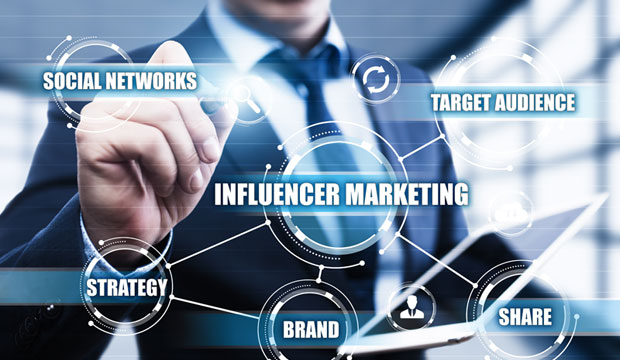Influencer marketing, which sprouted from the burgeoning social media sphere, is one of the fastest-growing ways to get a message out there. It uses the popularity of people dubbed “influencers,” who have many followers and a wide reach, to market products and sway opinions. It’s very much a marketing strategy for the social media age.
“Influencer marketing is one of the fastest-growing marketing channels today,” said digital strategist Shane Barker.
“It involves leveraging social media influencers or key leaders to get more people to trust your brand,” he told the E-Commerce Times.
Influencer marketing is rooted in traditional messaging. It’s simply been updated to account for modern forms of communication and the technologies that enable them.
“Influencer marketing is simply the new, faster word-of-mouth,” said Mae Karwowski, CEO of Obviously.
“It’s people sharing what they love with their communities,” she told the E-Commerce Times.
Why Influencer Marketing Works
Effective influencer marketing is all about trust. Though it sometimes can be difficult to get people to click on a banner ad, following the recommendations of an influencer can feel more natural and organic since it grows out of a perceived relationship.
Influencer marketing can be more effective than traditional methods of altering opinions and shaping purchasing decisions — particularly for younger audiences.
“The influencers have usually generated a sizeable online following on their social media or blogs,” noted Werner Geyser, founder of Influencer Marketing Hub.
“These people trust influencers’ recommendations and take notice of what they say and recommend,” he told the E-Commerce Times.
Influencers have an impressive framework that’s established well before a brand ever partners with them.
“Influencers have already done the hard work,” said Geyser. “They have built up a captive and interested audience. In most cases, they will have far more followers than the brand itself.”
Good Influence
Effective use of influencers, like any marketing, involves understanding your audience. With influencer marketing, that means understanding the influencers as well. An influencer’s sheer number of followers does not necessarily translate into that person being the right fit for a particular brand.
“The biggest mistake firms make is to go for big-name celebrities who may be totally irrelevant to the type of product you sell,” said Geyser. Celebrities are only really useful for mass-market products that target a whole range of people. Most firms will do better to work with micro-influencers, who may have fewer followers but who are more likely to have genuine engagement with them.”
Choosing the right influencers, therefore, is key.
“Choosing to work with the wrong influencers can be a major setback,” said Barker. “It can turn out to be a total waste of time, money, and effort. In fact, the wrong influencers can also bring you negative publicity. To avoid this, you should very carefully choose the influencers you want to work with. Make sure that they are authentic and relevant to your brand and niche. The content they create should align with your brand’s values, messaging, and campaign goals.”
It’s also important to vet influencers to ensure that they’re who they say they are and that their followers are real people, not bots.
“A drawback and common fear amongst brands is fakery and inauthenticity,” observed Joe Gagliese, managing partner of Viral Nation.
“Social platforms have tactics in place to mitigate fake followings and audiences but must ensure organic follower growth is not impacted by such algorithms,” he told the E-Commerce Times. “There are measures to avoid run-ins with influencers who boast a high number of followers who are largely made up of bots, [which results] in extremely low engagement rates and little legitimate influence.”
Advertising Transparency
Finally, it’s important to abide by all relevant regulations and standards regarding the use of influencers. Brands, in particular, need to ensure that their use of influencers is transparent and clear.
“American FTC standards have mandated that advertising through influencers is transparently communicated to audiences through written disclosure — i.e., #ad — or verbal disclosure — “Thank you to [brand] for sponsoring this video,” explained Gagliese. “Social platforms, including Facebook and Instagram, have hopped on board by building ‘branded partner tags’ into the platform.”
It may seem a burden to have to disclose so much, but audiences like to know who’s partnering with their favorite influencers.
“While some brands may be hesitant to be so forward with advertising to their audiences, followers are typically more receptive to messaging if they understand a creator is partnering with the brand,” said Gagliese.
“Brands must be careful in the influencer briefing process to avoid providing scripts. Key messaging is always important to ensure the brand is being represented in the best way, but audiences can easily identify inorganic content quickly,” he pointed out. “Avoid the need to dictate an influencer’s messaging by choosing the right influencer with the right audience.”
As with any business relationship, mutual understanding is key to making influencer marketing run smoothly.
“You have to have clear-cut contracts and know who you’re working with, and that goes both ways,” said Karwowski. “It’s really important that influencers are authentic in what they promote and that brands do their due diligence in their partnerships.”
The Evolution of Influence
Because it’s a relatively new practice, influencer marketing is still evolving along with the social media platforms and audiences it relies on. However, those in the field see a bright future for it.
“This fast-evolving marketing tactic will continue to help brands reach and engage their target audiences,” said Barker. “Influencer marketing is all about building and nurturing mutually beneficial relationships. It is only with powerful relationships that you’ll be able to run successful campaigns.”
As social media platforms evolve and change, so will influencer marketing.
“There has been a huge rise in platforms and agencies over the last few years, as people have seen a hole in the market for tools to help with the mechanics of influencer selection and marketing,” said Geyser. “There is no indication that this is likely to change soon.”
Also developing are influencer marketing niches that focus on narrowly defined audiences.
“People are beginning to widen their definition of ‘influencer’ to include important people with smaller followings in micro-niches and even employees of many firms,” said Geyser. “Employee advocacy is really a specialist variation of influencer marketing.”
Given its unique place at the intersection of social media and marketing, influencer marketing might eventually become one of the best ways to reach diverse and ever-changing audiences.
“Influencer marketing … will continue to evolve in the coming years,” said Gagliese. “Influencers provide a pivotal separation between a brand and their customers that is difficult to replicate at scale in other mediums. As the industry evolves, so will the tactics, and I truly believe that it will become a standard marketing channel for brands all over the globe.”
























































Social Media
See all Social Media